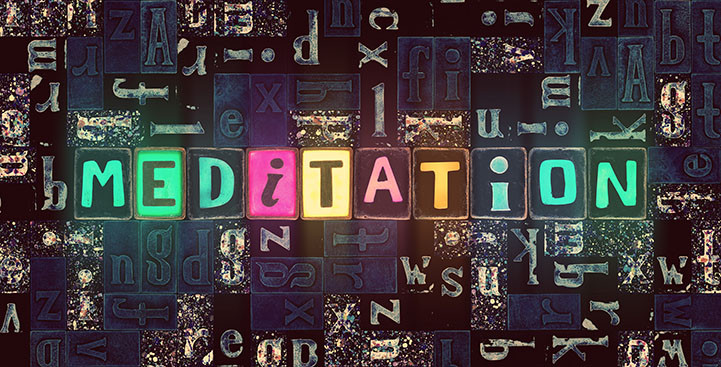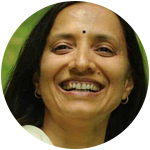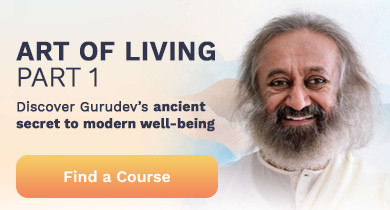
Meditation is becoming popular very fast thanks to its instant benefit for stress relief and its positive effects on physical and mental health. The history of meditation goes back to more than 5000 years. This ancient practice has been used for ages for spiritual and personal transformation. However, during the past 40 years, meditation practice has been adapted to the specific interests and orientations of western culture. More recently people have been meditating also as a complementary therapeutic tool for a variety of health-related problems.
What is the actual definition and meaning of meditation?
Meditation is an umbrella or generic term, which subsumes a huge number of diverse yet broadly similar practices, across history, cultures, and traditions, ranging from sitting quietly to deep inward focus to techniques designed to promote relaxation or a state of well-being to techniques designed to achieve enlightenment. Let us understand more about what are different meditation definitions.
Meditation definition as per the dictionary:
In the English dictionary, the word meditation is defined as to ponder, to ruminate, to reflect upon, or to contemplate. It is derived from two Latin words; meditari which means to think, ponder, dwell upon, exercise the mind, focus attention; and mederi which means to heal.
Meditation definition as per health organizations:
The National Center for Complementary and Alternative Medicine (NCCAM) mentions: “Meditation techniques include specific postures, focused attention, or an open attitude toward distractions. People use them to increase calmness and relaxation, improve psychological balance, cope with illness, or enhance overall health and well-being.”
The consequence of such a meditation practice is lowered metabolism that goes by the well-known phrase, the relaxation response. Though in this official (and hence accepted) definition, there is no mention of the deeper levels of mental states reached in the process, the original scriptures on meditation do confirm this.
Meditation definition as per scriptures:
As per western psychology, there are three states of consciousness: sleep, dream, and wakefulness. While in the Eastern philosophy and in several Western religious and mystical traditions, an additional and supposedly ‘higher’ state of consciousness has been described, that is ‘fourth state of consciousness’ or the state of ‘thoughtless awareness’ or ‘witness consciousness’. The ancient scriptures call it ‘turiya avastha’. In this state, the constant chatter of the mind seems to be replaced by a deep sense of calm and expanded consciousness. This state becomes easier to achieve by the consistent and sincere practice of ‘dhyana’ - a state beyond the generic term meditation.
Gurudev Sri Sri Ravi Shankar, the founder of Art of Living and world-renowned meditation master, explains that the word dhyana comes from the Sanskrit word ‘dhyai’, which means to think of or to concentrate, and ‘Na’ means no. So dhyana means no concentration. In fact, it is the process of deconcentration or de-focussing.
In the context of yoga, according to Patanjali Yoga Sutra, the term dhyana was used and is explained as a state of pure consciousness. It is the seventh limb of the 8 limbs yogic path and follows Dharana- the delicate technique of concentration, some people also call it concentration meditation.
The third chapter sutra (aphorism) III.2 of the Patanjali Yoga Sutra mentions and defines dhyana as:
तत्र प्रत्ययैकतानता ध्यानम्॥3.२॥
tatra pratyaya-ikatānatā dhyānam ॥3.2॥
Allowing your awareness to flow like an uninterrupted stream results in meditation.
tatra = there, in that; pratyaya = content of the mind, awareness; ekataanataa = continuous (flow) or uninterrupted (flow) in one fixed direction; dhyanam = meditation (dhyana).
Here the word ‘tatra’ refers to the previous sutra which defines dharana-the focussed attention.
The word pratyaya refers to the content of the mind which probably Maharishi Patanjali refers to as the five vrittis (modulations) of the mind in the initial few aphorisms of chapter 1.
Putting all words together, this is how I understand: When we are gently focusing on an object for dharana, and in that direction, the awareness starts flowing effortlessly like a stream of oil (uninterrupted by any of the five vrittis of the mind), we start becoming one with the object as if fully getting absorbed into it. This is how meditation starts happening.
Gurudev Sri Sri Ravi Shankar has explained this in his latest commentary on Patanjali Yoga Sutras - that meditation is like pouring oil from one container to another - the flow is continuous, smooth, and constant. When we pour water, it may flow in droplets, but when we pour oil, the flow is very smooth and uninterrupted.
Here one thing is very important to understand
Difference between dharana and dhyana
During dharana, active but gentle efforts are made to keep our attention on the object of dharana to keep the distractions away. When these gentle efforts succeed then the mind starts to settle down and becomes “no mind” or flows like an expanded awareness. Spontaneously you get connected with the Self which is identified by a deep sense of calm and peace within.
To make it simple to understand, someone who had achieved the state of dharana would say that they were able to focus completely on a light (or any object they chose). Someone who had achieved the state of dhyana would say that they seemed to become the light as if there was no mind. There was just a subtle yet palpable sense of Self characterized by an experience of inner peace and silence.
Get your earphones, and try this Dharana to Dhyana Meditation.
Some pro tips for meditation
Effortlessness is the key
Gurudev Sri Sri Ravi Shankar guides that to achieve something at the physical level (bodily level), efforts are required. But in the realm of the mind, any effort will be counterproductive. Effortlessness is the key. So whether you are doing dharana or dhyana, gentleness and minimum or no effort are the rules
If you are new to meditation, Gurudev Sri Sri Ravi Shankar's tips on how to meditate and bring the mind in the present moment will help you tremendously to get you started and pursue your meditation practice and make it a daily routine.
What is an example of meditation?
There are many techniques of meditation, but a classic and simplest example of meditation practice could be: just sitting quietly with your eyes closed and allowing your body and mind to gradually relax by doing nothing. A gentle awareness of your breathing along with body scanning may be helpful, to begin with. But then totally drop all your efforts. Some thoughts may float in your mind, let them be and they will pass by on their own. You will no longer be bothered or distracted by your mind and thoughts. Meditation is the process of letting go and allowing your mind to relax completely.
Some other examples may include: pay attention to internal points like your breath or chakra or pay attention to external objects like a candle or mantra.
How do we know we have meditated?
Now that you have understood what is meditation, you may want to know what does meditation feels like.
Most people experience a feeling of relaxation and calmness after a meditation session.
Usually, there is a feeling of having lost track of time - 20-30 minutes have passed and it felt like just 5 minutes. An experience of loss of self - one loses awareness of the body, thoughts, and emotions - there is the transcendence of that. The result is often energizing yet relaxing. Though you are not looking for any particular experience, you may feel some soothing vibrations or the feeling of having enveloped by light or may feel light as a feather or skin soft like a velvet clothing material.
Meditation is an oil-like flowing state when the mind’s crazy chattering (vrttis)—what we call the monkey mind—rests and clarity and calmness dawn. These moments are often accompanied by insights, creativity, a fresh perspective, openness, and a feeling of love and bliss.
Benefits of meditation: What is the purpose of meditation?
There are a lot of benefits of meditation that range from stress reduction, effectively decreasing depression and anxiety to healing emotional trauma, reducing chronic pain, increasing emotional resilience, better decision making, reducing the tendency to react mindlessly, and instilling deep inner peace and calm. Spiritual growth, self-realization, enlightenment were some of the main reasons to meditate for people in ancient times.
Here are some of the benefits of meditation that both medical experts, yoga, and meditation practitioners have commonly reported:
Reduces stress
Lessen anxiety
Improved psychological and emotional health
Enhanced self-awareness and mindfulness
Better focus and concentration
Improved sleep and relaxation
Helps control pain
Decreased blood pressure
Increased creativity
Increased productivity
More kindness and compassion
With regular meditation practice, you can get started to experience all the different benefits of meditation, and greatly enhance the quality of your life.
Different Types of Meditation
There are many different types of meditation. If you google, your search will show many types and forms of meditation. The most popular types of meditation are mantra meditation, breath meditation, spiritual, mindfulness meditation, or mindfulness-based stress reduction, vipassana. Let us explore.
What are three types of meditation as per the three EEG patterns?
A recent meditation research paper has tried to provide a taxonomy for the term meditation. Three different types of meditation are suggested based on distinct EEG profiles they seem to project. These types are: i) focused attention (FA) (on any object), ii) open monitoring (OM), and iii) “automatic self-transcending” (ST). In other words, the distinction here is based on the underlying EEG patterns for each.
Focused attention, characterized by beta/gamma activity, included meditations from Tibetan Buddhists, Buddhists (eg. zen, qigong, vipassana meditation), and Chinese tradition. Open monitoring, characterized by theta activity, included meditations from Buddhists (eg. mindfulness, loving-kindness meditation), Chinese, and Vedic traditions. Automatic self-transcending, characterized by alpha1 activity, included meditations from Vedic (eg. transcendental meditation or Sahaj Samadhi Meditation) and Chinese traditions.
The Art of Living teaches a breathing meditation technique - SKY Breath Meditation and another mantra meditation technique - Sahaj Samadhi Meditation. Both fall under the ST category and are hugely popular across the globe.
Moreover, recent research shows that a single session of SKY generates global brain rhythm dominantly with high-frequency cerebral activation and initiates appropriate interhemispheric synchronization in brain rhythms as state effects. This suggests that SKY leads to better attention, memory, and emotional and autonomic control along with enhanced cognitive functions, which finally improves physical and mental well-being.
Get started today: ready to meditate and relax?
Now that you have understood meditation as per theory, get ready for an actual experience of meditation. Bring home a live meditation instructor virtually and get ready to do guided breathwork and meditation. Experience of peace of mind is just a click away, join Beyond Breath, an online meditation session now. You will also learn more about life-transformative SKY Breath Meditation training and how you can make it your daily meditation practice.
Alternatively, dive deep into the present moment and experience the calmness of mind with some beautiful short guided meditations from our meditation app (download it for free)!
Begin your meditation journey today!






























